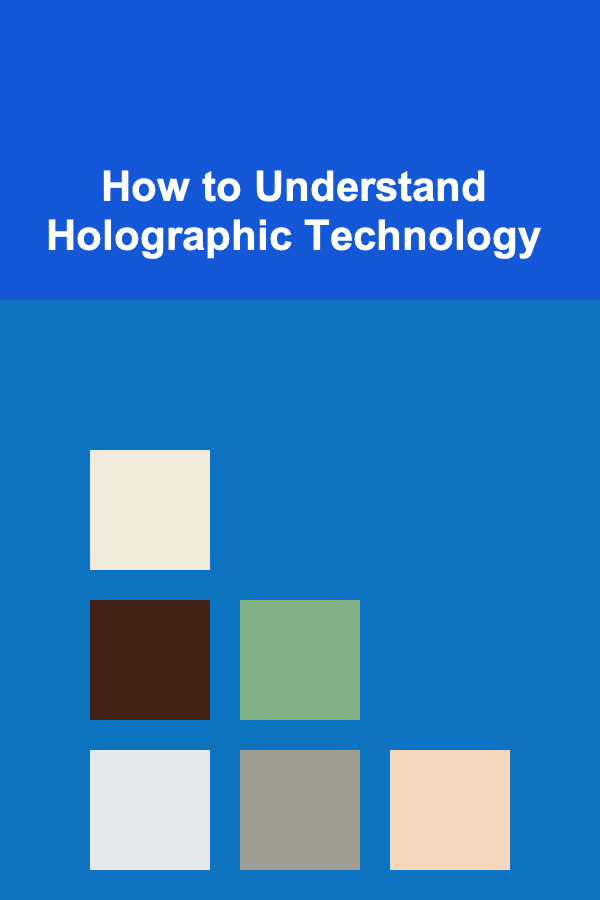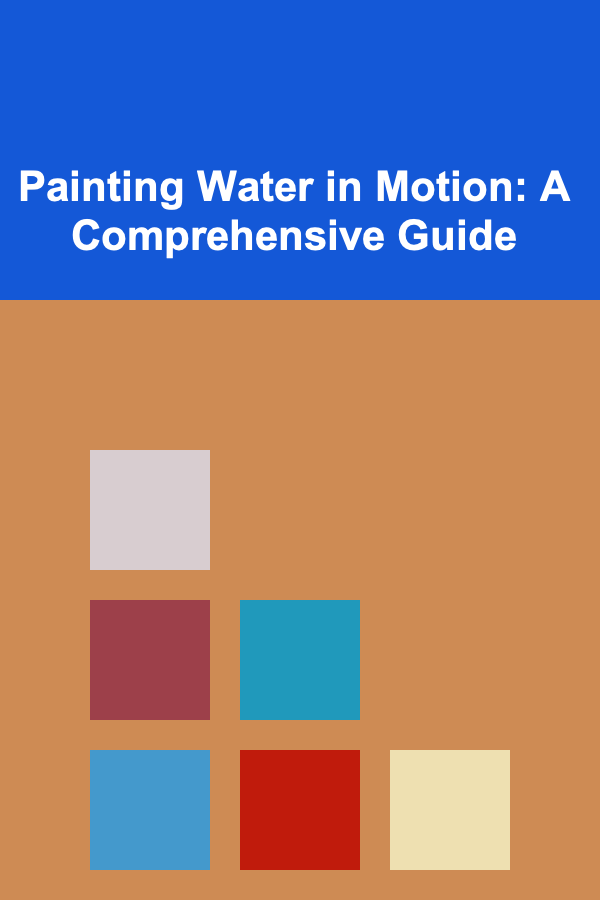
10 Tips for Choosing the Right Paper for Printable Invitations
ebook include PDF & Audio bundle (Micro Guide)
$12.99$11.99
Limited Time Offer! Order within the next:
Not available at this time

When it comes to designing printable invitations, choosing the right paper is just as important as the design itself. The paper you choose can make a significant difference in the final product, affecting the texture, appearance, and overall feel of the invitation. Whether you're planning a wedding, birthday, baby shower, or any other special event, selecting the perfect paper can elevate your invitations from ordinary to extraordinary.
With so many types of paper available, it can be overwhelming to make the right choice. Should you go for a smooth finish or a textured look? What weight should the paper have? Is a glossy finish better, or is matte more appropriate for your design? In this article, we will walk you through 10 tips that will help you choose the right paper for your printable invitations, ensuring they look stunning and feel exceptional.
1. Consider the Type of Event
The type of event you're hosting plays a major role in determining the best paper for your invitations. Different events often have distinct vibes, and the paper you choose should reflect that atmosphere.
- Weddings: Weddings typically call for high-end, luxurious papers like textured cardstock or heavy-weight cotton paper. These papers provide a refined, elegant feel and are often associated with formality and sophistication.
- Birthday Parties: Depending on the theme, birthday invitations can vary in terms of formality. For a casual birthday party, a smooth matte or glossy finish might be appropriate, while a more luxurious event could call for heavier cardstock or specialty paper with foil accents.
- Baby Showers: Baby shower invitations are often playful and fun, so a lighter, textured paper or a subtle metallic finish could be perfect. A delicate, soft finish is ideal for conveying warmth and happiness.
- Corporate Events: Corporate events often require a more formal, professional look. Opt for a clean, crisp finish like smooth white or cream cardstock to maintain a business-like appearance.
Why it works:
- The paper sets the tone for the event and helps guests anticipate the atmosphere.
- The right paper complements the overall design, enhancing the message and aesthetic of the invitation.
2. Determine the Weight of the Paper
Paper weight is an important factor when choosing the right paper for your invitations. It affects both the feel and the quality of the invitation. Paper weight is usually measured in pounds (lbs) or grams per square meter (gsm). The higher the number, the thicker and heavier the paper will be.
- Lightweight Paper: This is typically around 70-90 lbs (105-135 gsm). Lightweight paper is a good choice for casual or informal invitations, such as simple birthday parties or informal gatherings.
- Medium-Weight Paper: This is around 100-120 lbs (150-220 gsm). Medium-weight paper offers a substantial feel without being overly heavy, making it a versatile choice for many types of events.
- Heavyweight Paper: This is typically 130-160 lbs (280-350 gsm) and is perfect for more formal occasions, such as weddings or corporate events. Heavyweight paper provides a luxurious feel and durability, ensuring that your invitation feels substantial in the recipient's hands.
Why it works:
- The weight of the paper contributes to the perceived quality of the invitation.
- Heavier papers often feel more luxurious and are better suited for formal events, while lighter papers work well for more casual occasions.
3. Select the Right Finish for Your Design
The finish of the paper can dramatically change the look and feel of your invitation. There are several finishes to choose from, each with its own benefits.
- Matte Finish: Matte paper has a non-reflective surface, offering a smooth, soft appearance. It's perfect for designs with lots of text, as it reduces glare and ensures that everything is easy to read. Matte paper also has a timeless, elegant feel, making it ideal for weddings, formal events, and minimalist designs.
- Glossy Finish: Glossy paper has a shiny, reflective surface that makes colors appear more vibrant and details pop. This finish is perfect for designs with rich, bold colors or photography, as it enhances the visual impact of images. It's often used for birthday party invitations or other more festive events.
- Satin Finish: Satin finishes combine elements of both matte and glossy finishes. They offer a slight sheen without the high gloss of traditional glossy paper, making them a great middle ground. Satin finishes can give your invitation a sophisticated look without the extreme shine of glossy paper.
- Textured Paper: Textured papers, such as linen or felt, offer a tactile experience and a unique visual appeal. They are a great choice for upscale or artistic events, adding an extra layer of depth and interest to the design. Textured paper is especially well-suited for weddings, where an elegant yet distinctive feel is desired.
Why it works:
- The finish enhances your design, making colors pop or giving your invitation a more elegant and sophisticated touch.
- Different finishes complement various design styles, helping to create the right atmosphere for your event.
4. Understand the Paper's Opacity
Opacity refers to how transparent or translucent the paper is. If your invitation features bold colors or intricate designs, you'll want to ensure that the paper you choose is opaque enough to prevent any bleed-through from the back.
- High Opacity: Papers with high opacity are perfect for invitations that have printing on both sides. These papers prevent the ink from showing through, ensuring a clean and professional appearance.
- Low Opacity: Papers with lower opacity may be better suited for designs that are printed on one side only or for more delicate, artistic invitations where transparency is part of the design.
Why it works:
- High opacity ensures that your design remains crisp and clear without any distracting ghosting or bleed-through.
- Low-opacity papers can be used creatively to add unique effects to your invitations.
5. Consider the Color of the Paper
The color of the paper can drastically affect the overall feel and aesthetic of the invitation. Most invitations are printed on white or cream-colored paper, but don't be afraid to experiment with colors to create a more personalized or unique look.
- White Paper: White paper is the classic choice for most invitations, offering a clean, neutral background that allows the design to shine. It's especially suitable for formal events like weddings and corporate gatherings.
- Cream or Ivory Paper: Cream or ivory paper has a slightly warmer tone compared to white, giving invitations a softer, more traditional feel. This is an excellent option for vintage-style or romantic designs.
- Colored Paper: Colored paper can add personality and flair to your invitations. If you choose a colored paper, make sure that it complements your design and doesn't overwhelm the text or images. Light pastel colors, like pale pink or lavender, work well for feminine events, while darker shades, like navy or burgundy, can create a more dramatic, elegant feel.
- Custom Color: For a truly unique touch, consider custom-colored paper that matches your event's color scheme. Custom papers can create a memorable invitation that perfectly reflects the theme and mood of your event.
Why it works:
- The color of the paper enhances the mood and tone of the invitation, helping to set expectations for the event.
- Choosing a color that complements the overall design ensures the invitation is cohesive and visually appealing.
6. Account for Printability
Before choosing a paper, you should consider whether it's suitable for your printer. Some specialty papers, such as those with textured surfaces or unusual finishes, may not print well on standard home printers.
- Inkjet Printers: If you're printing invitations at home, you'll want to choose paper that is compatible with inkjet printers. Look for papers that specifically mention inkjet compatibility to avoid issues like smudging or ink bleeding.
- Laser Printers: Laser printers work best with smooth, non-porous papers. Choose papers that are smooth and designed for laser printing to ensure a crisp, clean finish.
- Specialty Papers: For more intricate designs or special effects, such as foil stamping or embossing, consider taking your designs to a professional printer. These papers may require specialized equipment and expertise.
Why it works:
- Using the right type of paper ensures that your invitations print cleanly, with sharp text and vibrant colors.
- It minimizes the risk of smudging, bleeding, or uneven ink coverage.
7. Think About Texture and Feel
The texture of the paper can add a unique dimension to your invitations. Some papers have a smooth, silky texture, while others are rougher or more tactile.
- Smooth Paper: Smooth paper has a sleek, polished feel and is easy to write on. It's ideal for designs that rely heavily on typography or clean lines, as it ensures that the text is clear and sharp.
- Textured Paper: Textured paper adds visual and tactile interest to your invitations. Common textures include linen, felt, and laid finishes, all of which can add a luxurious or artistic feel to your design. Textured paper is often used for upscale events like weddings, where the tactile experience of the invitation is part of the charm.
- Recycled Paper: If you're looking for an eco-friendly option, recycled paper is a great choice. Recycled paper comes in a variety of textures and finishes and adds a rustic, natural feel to your invitations.
Why it works:
- The texture can enhance the overall sensory experience of the invitation, making it feel more personal and memorable.
- Texture helps to convey the style and formality of the event.
8. Stay Within Your Budget
While high-quality paper can certainly elevate your invitations, it's important to choose a paper that fits within your budget. There are plenty of beautiful papers available at various price points, so take the time to balance quality and cost.
- Cost-Effective Options: If you're on a budget, you can still find excellent papers that work well for your invitations. Consider choosing a medium-weight paper with a simple finish, which offers a good balance between quality and cost.
- Luxury Papers: For more upscale events, you might want to splurge on specialty papers like cotton or handmade paper. While these options may be more expensive, they provide an unmatched level of luxury and refinement.
Why it works:
- Staying within your budget ensures that you don't overspend on paper while still getting the desired effect for your invitations.
- It allows you to allocate your budget to other elements of the invitation, such as design or printing costs.
9. Test Before You Commit
Before you commit to a large print run, it's always a good idea to test your paper. Printing a sample invitation allows you to check for any potential issues, such as ink bleed-through, paper curling, or uneven print quality.
Why it works:
- Testing helps ensure that the paper works well with your printer and design.
- It allows you to make adjustments before committing to a large batch of invitations.
10. Consult with a Professional Printer
If you're unsure about the best paper for your printable invitations, consider consulting a professional printer. Many printing companies offer paper samples and expert advice to help you choose the right option for your needs.
Why it works:
- Professional printers have experience with various paper types and can offer recommendations based on your design, budget, and event.
- They can guide you to high-quality options and help ensure that your invitations turn out just as you envision.
Conclusion
Choosing the right paper for your printable invitations is an essential part of the design process. By considering factors such as the type of event, paper weight, finish, and texture, you can ensure that your invitations not only look beautiful but also convey the right tone and atmosphere for your special occasion. With these 10 tips, you'll be well on your way to creating invitations that leave a lasting impression on your guests. So take your time, experiment with different options, and have fun selecting the perfect paper for your next event!

How to Arrange Furniture for Better Flow in a Compact Space
Read More
How to Organize Small Spaces for Maximum Storage Efficiency
Read More
One-Page Website Navigation: How to Create a Seamless User Journey
Read More
How to Understand Holographic Technology
Read More
Painting Water in Motion: A Comprehensive Guide
Read More
Connecting with Universal Energy in Yoga
Read MoreOther Products

How to Arrange Furniture for Better Flow in a Compact Space
Read More
How to Organize Small Spaces for Maximum Storage Efficiency
Read More
One-Page Website Navigation: How to Create a Seamless User Journey
Read More
How to Understand Holographic Technology
Read More
Painting Water in Motion: A Comprehensive Guide
Read More